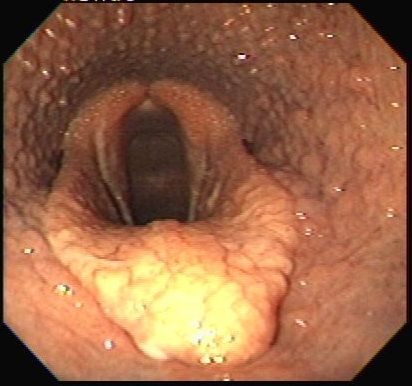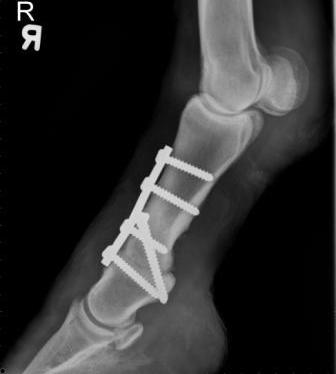The Equine Surgery service offers general surgical procedures such as:
• Castration
• Laceration repair
• Limb deformity correction of foals
• Umbilical hernia repair
• Laser Surgery
In addition, we offer more complex procedures, such as:
Abdominal Procedures
Gastroscopy
Gastroscopy is the only way in which to definitively diagnose gastric (stomach) ulcers. This outpatient procedure requires sedation and a small camera is passed through the horse’s nasal passages, down the esophagus, and into the stomach. Your horse will need an empty stomach, however, and it is recommended they be held off feed for 12 hours and water for 4 hours prior to your appointment.
Emergency colic surgery
The staff at the LVMC are available at all hours to accept emergencies. Our sterile colic surgery suite is equipped with a closed-circuit camera allowing owners to observe surgery from the privacy of a designated room.
Laparoscopy
Laparoscopy is a minimally invasive surgical procedure that uses multiple small incisions to accommodate specialized instruments. Laparoscopy is available for certain abdominal procedures, such as cryptorchid castration
and ovariectomy.
Diagnostic Imaging Services
Ultrasound
Ultrasound is a diagnostic method used to detect soft tissue injuries. A probe is placed on the area of interest and sound waves are used to reflect an image of the tissues onto the screen. Occasionally a patient will require sedation for this procedure.
Computed Radiography (digital x-rays)
The LVMC is proud to offer digital radiography. The benefit of this over standard film radiographs is improved contrast with a digital image, less time spent in the radiography suite, instant access to images, and images that are portable on a disk or USB drive.
Nuclear Medicine (bone scan)
Bone scans (nuclear scintigraphy) are helpful in detecting subtle lamenesses or musculoskeletal performance disorders that are unable to be blocked out with nerve or joint blocks. The patient is injected in the vein with a radioactive isotope that is taken up by tissues undergoing active remodeling. As the patient is radioactive for a period of time after the procedure, at least two days’ hospitalization is required.
MRI
Magnetic Resonance Imaging is available for the foot, ankle, and head. The specific detail of structures obtained is the biggest benefit to this imaging technique. General anesthesia is required for this procedure.
CT (coming soon)
A Computed Tomography unit is anticipated to be operational at the LVMC soon. This will allow 3-D imaging of fractures and other more specific imaging of bone and soft tissue structures.
Orthopedics
Arthroscopy
Arthroscopy is a minimally invasive surgery utilizing a small camera in which access to joints is achieved through small incisions. It is used for the removal of bone fragments, repair of certain intra-articular soft tissue injuries, diagnosis of joint conditions, and treatment of OCD (osteochondritis disssecans). General anesthesia is required as well as hospitalization for at least 2 days.
Fracture Repair
Fractures ranging from small splint bone fractures to those involving the long bones (cannon bone, tibia, etc) are repaired using internal fixation utilizing ASIF principles, external fixation, or other methods of repair.
Tendon and Ligament Injury Evaluation and Treatment
Injury to tendons and ligaments is common in athletes. Each patient will be thoroughly examined to arrive at an accurate diagnosis. Multiple treatment options are available including Platelet Rich Plasma (PRP), Stem Cell therapy, IRAP, and Extracorporeal Shockwave therapy. An underwater treadmill for rehabilitation of soft tissue injuries will be available in the new Performance Evaluation Center. Stay tuned!
Upper Airway Examination

Endoscopy
A small camera is passed through the nasal passages and into the pharynx and larynx to observe structures important for proper airway function. Additionally, the guttural pouches are able to be examined for signs of bacterial or fungal infection, inflammation. Sedation may be required for this outpatient procedure.
Treadmill Evaluation
Examination of the upper airway during exercise can be an important part of diagnosing performance limiting disorders. The LVMC has an equine treadmill available for dynamic upper airway evaluation. The endoscope (link to “endoscopy”) camera is placed in the nasal passages to view the response of the larynx during the extreme differences in airway pressure experienced during exercise. Horses require at least two days’ hospitalization to become accustomed to the treadmill prior to this examination.
General Surgery Procedures

